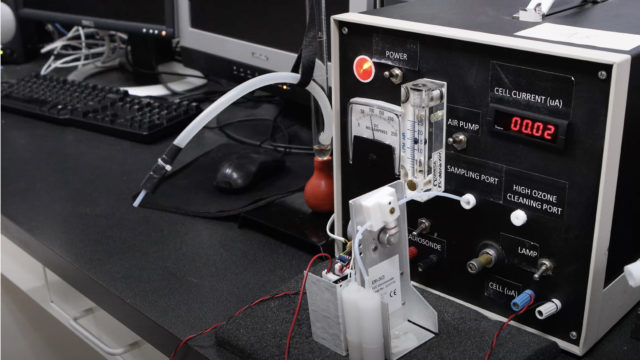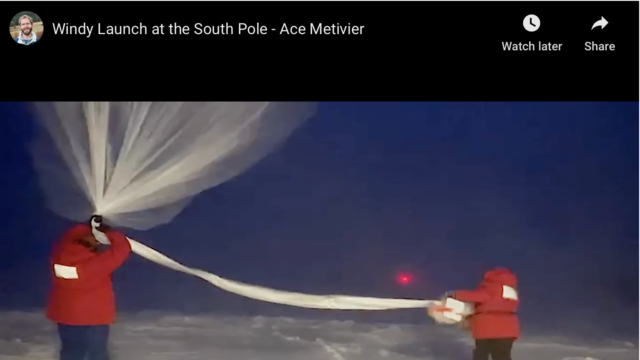By NOAA Communications The hole in the ozone layer—the portion of the stratosphere that protects our planet from the Sun’s ultraviolet rays—is continuing to decrease, scientists from NOAA and NASA reported today. This year’s ozone hole over Antarctica had an average area of 8.91 million square miles (23.2 million square kilometers), slightly smaller than the extent of 8.99… Read More
By Patrick Cullis, CIRES and NOAA scientist At the ozonesonde lab in Boulder, Colorado, part of NOAA’s Global Monitoring Laboratory, scientists prepare and launch ozonesondes to over 100,000 feet to directly measure Earth’s protective ozone layer. The researchers also ship supplies from the Boulder lab to NOAA’s Baseline Observatory at the South Pole, so technicians… Read More
By Patrick Cullis, CIRES and NOAA scientist NOAA techs Bailey Nordin and Will Skorski have spent the past year living and working at the South Pole. One of their regular tasks is to release high-altitude balloons carrying instruments that measure ozone levels in Earth’s protective ozone layer high above Antarctica. The typical rubber meteorological balloons… Read More



